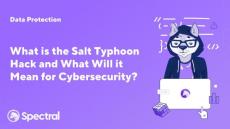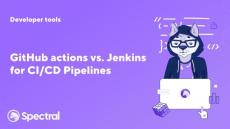|
By Eyal Katz
Subdomain takeovers don’t happen because attackers are geniuses. They happen because DNS records get messy. It’s not exactly an exciting gig to track old services or clean up unused subdomains, but ignoring it creates a security hole you can’t afford. Microsoft discovered over 670 vulnerable subdomains in a single audit. On a larger scale, 21% of DNS records out there lead to unresolved content, and 63% of those throw ‘404 not found’ errors.
|
By Eyal Katz
What’s the difference between an unsupervised toddler with markers and an unsecured CI/CD pipeline? Both look fine at first, but chaos is inevitable. While a toddler might scribble on walls, an unsecured pipeline invites attackers to wreak havoc on your digital assets. Cleaning up after either is tough—prevention is smarter. The CrowdStrike 2024 report reveals that cloud-conscious intrusions skyrocketed by 110% in 2023.
|
By Eyal Katz
What if your most personal chats, the very foundation of your digital existence, were exposed? Unfortunately, that’s precisely what happened with the Salt Typhoon Hack on July 2024, a terrible cyberattack that put big U.S. telecom companies at risk. The scale of this intrusion has never been seen before. Malicious actors accessed sensitive data such as call logs, metadata, and even interactions with key political officials.
|
By Eyal Katz
Your IT infrastructure is a complicated network of systems and activities that generate massive volumes of data every second. Hidden within this data stream is the key to understanding your systems’ health and potential dangers. The dangers are significant, given that the average worldwide data breach costs an exorbitant $4.45 million. One such security breach can destroy your organization, resulting in legal fines, financial loss, and harm to your reputation.
|
By Eyal Katz
What if the very core of your company—the digital ecosystem you painstakingly built—is under attack? If an invisible enemy gets illegal access and begins manipulating data or disrupting essential processes, your entire organization could be paralyzed in an instant. Remote Code Execution (RCE) vulnerabilities have this terrifying reality. RCEs are the holy grail for hackers, allowing them to run arbitrary commands on a target machine.
|
By Eyal Katz
The cloud gives you agility, speed, and flexibility – but it also opens new doors for attackers. For DevOps teams, every line of code, every container, and every deployment pipeline is a potential entry point and missteps are easier than ever. Misconfigurations alone cause 80% of all security breaches in cloud environments, so the stakes are even higher. This poses a severe security risk with wide-ranging consequences, making it evident that cloud-native environments demand a new security mindset.
|
By Eyal Katz
Imagine a world where you can easily protect your company’s important data while ensuring compliance with strict security guidelines. ISO 27001:2022 promises just that. Because data breaches are becoming more expensive and cyber threats are growing, companies need to strengthen their security posture. Just in 2024, the average cost of a single data breach reached an astonishing $4.88 million. ISO 27001:2022 offers a proven framework to safeguard your organization’s information assets.
|
By Eyal Katz
You don’t control most of the code in your software. Unfortunately, that’s the reality of today. Open-source libraries, third-party components, and vendor integrations make up the bulk of most modern applications because they save time and resources, allowing you to build on existing frameworks rather than reinvent the wheel. But with every supply chain component, you’re opening a potential doorway for attackers to exploit.
|
By Eyal Katz
Large language models (LLMs) are transforming how we work and are quickly becoming a core part of how businesses operate. But as these powerful models become more embedded, they also become prime targets for cybercriminals. The risk of exploitation is growing by the day. More than 67% of organizations have already incorporated LLMs into their operations in some way – and over half of all data engineers are planning to deploy an LLM to production within the next year.
|
By Eyal Katz
There’s an age-old saying you can tell an engineer’s age by their preferred CI/CD (continuous integration and continuous delivery) tool. Depending on who you talk to, the battle-tested Jenkins remains their weapon of choice, while GitHub Actions is the new kid on the block turning heads. However, here’s something that might surprise you – about half of all developers spend less than 20 hours per week on actual software development tasks.
|
By Spectral
For developers, secret and credential leakage is a problem as old as public-facing repositories. Unfortunately, in 2021 it is officially a significant risk. One that is easy to ignore until it is too late. In a rush to deliver, developers will often hard-code credentials in code or neglect to review code for exposed secrets. The results can be embarrassing, at best - but devastatingly costly in other cases.
|
By Spectral
The cloud has come a long way from Eric Schmidt's "modern" coining of the phrase in 2006. Today, companies and institutions are reliant upon a cloud infrastructure to run their day-to-day operations. This reliance and growth have also transformed the threat landscape and your cybersecurity requirements along with it. Though cloud service providers are working ceaselessly to shore up vulnerabilities and bolster defenses, the responsibility for your cloud assets does not solely lie with them. Estimates predict that by 2025, 99% of cloud failures will be caused by the customer.
|
By Spectral
Consuming secrets is a cornerstone for connectivity between applications and infrastructure. Whether it be cloud identity-based secrets such as IAM role keys from AWS, or FTP accessibility credentials - secrets such as these are often discovered by malicious users. The common culprit is usually in a public space such as public repositories on GitHub. While it's easy to think "that will never happen to us", it only takes one misplaced key pushed to the wrong repository for your entire infrastructure, application, and databases to be compromised and exposed.
|
By Spectral
Imagine you are in charge of maintaining data for some of the most secretive government offices and powerful business entities globally. You have a significant investment in your security apparatuses protecting that knowledge. For years you haven't had a single blip or incident to cause any suspicion. Then the unthinkable happens, and from a single weak point, your entire network is compromised by malicious code hidden in an innocuous update.
- February 2025 (3)
- January 2025 (4)
- December 2024 (3)
- November 2024 (4)
- October 2024 (7)
- September 2024 (2)
- August 2024 (4)
- July 2024 (3)
- June 2024 (4)
- May 2024 (5)
- April 2024 (3)
- March 2024 (3)
- February 2024 (4)
- January 2024 (3)
- December 2023 (3)
- November 2023 (5)
- October 2023 (3)
- September 2023 (4)
- August 2023 (3)
- July 2023 (4)
- June 2023 (4)
- May 2023 (3)
- April 2023 (5)
- March 2023 (3)
- February 2023 (2)
- January 2023 (5)
- December 2022 (4)
- November 2022 (3)
- October 2022 (4)
- September 2022 (3)
- August 2022 (5)
- July 2022 (4)
- June 2022 (4)
- May 2022 (4)
- April 2022 (6)
- March 2022 (2)
- February 2022 (12)
- January 2022 (2)
- December 2021 (4)
Monitor, classify, and protect your code, assets, and infrastructure for exposed API keys, tokens, credentials, and high-risk security misconfigurations in a simple way, without noise.
Leverage SpectralOps’ advanced AI backed technology with over 2000 detectors to discover and classify your data silos and uncover data breaches before they happen. Get real-time slack alerts, workflow with JIRA tickets or your choice of notification on data breaches in real time and empower your teams to take immediate action.
Security for all stacks and assets:
- Supercharge your CI/CD: Automate the processes of secret protection at build time. Monitor and detect API keys, tokens, credentials, security misconfiguration and other threats in real time.
- Eliminate public blindspots: Continuously uncover and monitor public blindspots, supply chain gaps, and proprietary code assets across multiple data sources in a single dev-friendly platform.
- Apply & enforce your policies: Seamlessly integrate your own playbooks, build your own detectors, and implement mitigation policies throughout your software development lifecycle.
Achieve data loss prevention in real time.













